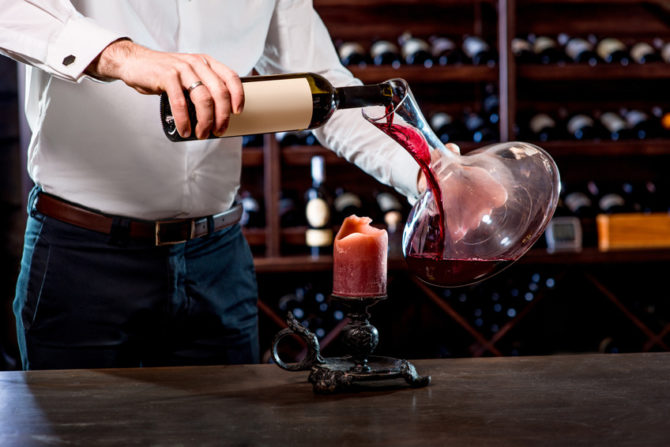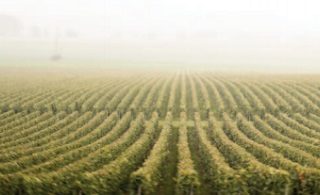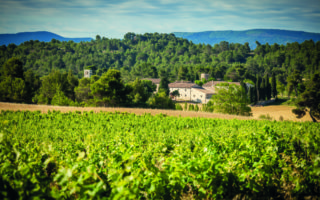Starting a Wine Cellar

The 1st in our series on creating your own French wine cellar.
Do you love wine and dream of having a wine cellar of your own, instead of just buying a bottle or bag-in-box (BIB) when needed? Grahame Martin’s guide to starting a wine cellar will show you how to go about it and where to get advice…
So much has changed in the past 30 years in the wine business that many of those wonderful books on wine cellars, so elegantly written by the leading wine writers of the time, are now totally out of date. There are a few new ones but most of them do not cater for the modern way of living, shopping, or even the space available in a new house. The UK did not have its first licensed supermarket until the 1970s (although here in wine-producing France we were far more advanced), and not everyone has an underground cellar or garage, insulated loft, outhouse or even an old fashioned walk-in larder that can be converted.
So, start with a few basics – no, not wines – but making the best of your resources, and adhering to a few useful dos and don’ts.
The five worst enemies of any wine in storage
Temperature, damp, excessive light, vibration and upright storage.
1. Temperature – The ideal is around 10°C – It is far better though to have a constant 15°C to 20°C than a variation from 5 to 20. The continual heating and cooling of the product, however it is sealed, will age the wine rapidly.
2. Damp – Not only will damp rot the labels and in some cases cause them to fall off the bottle, but also it can cause even a top quality cork to get a ‘mould’ that can work its way into the wine and make it undrinkable. Modern metallic wine seals can also be effected by damp.
3. Excessive light – This may also have an effect on temperature. The main problem here is that white and rosé wines, particularly in clear bottles, can very quickly oxidize – go tawny, gold or even brown. For example, a wine like a Sancerre that is subject to excess light can more resemble a dry sherry than a crisp, clean dry white wine in a very short time.
4. Vibration – The effect of continual vibration, from the central heating, washing machine or clothes dryer. It aggravates mainly the red wines of quality that you are trying to keep for a 3 to 5 year period. Instead of a proudly presented, fully mature wine, you end up with something that would be best poured down the drain. Vibration normally causes problems for wines that are designed or that need mid- to long- term storage. Vintage Port (NOT Late Bottled Vintage), classic red wines from Bordeaux, Burgundy and the Rhone Valley, and maturing top end dessert wines like Sauternes , and the Coteaux de Layon from the Loire are all good examples.
5. Upright Storage – Only really applicable to wine with ‘true’ or composite corks, which dry out and can cause not only leakage but also oxidization of the wine. Sparkling wine corks are particularly prone to this problem. The plastic variety and the screw cap are not normally affected, but by laying them horizontally you will find any loose seals very rapidly.
What space is available?
This will determine the number of wines and bottles capable of being stored.
The first stage is now complete, a suitable place has been selected and adjustments have been made to eliminate any wine enemies. Blissfully, so far the cost has been minimal.
Now, enter the necessity to start paying out money.
How many bottles, and what will be used as a storage unit?
Unless it is a real cellar in an old house, a purpose built one below ground level, or an underground garage (quite common in France), there may well be severe restrictions on the available space.
Speaking personally for a moment, I live in a modern house, use part of the garage (the car stays outside), and have a double width metal wine rack – 160 cms high x 100cms wide x 60 cms deep – screwed to the wall. The racking can take 300 bottles if full (although it seldom is!). This type of racking can fold flat and be moved, just by using a screwdriver, which makes it ideal for those who move house frequently.
Most easy to move racking is made of a mixture of wood and metal or, like mine, solely metal. There are specialist racking makers all over Europe, and stockists are easy to find – check any wine consumer wine magazine for details. Care should be taken in selecting a wood/metal rack, that the materials are sturdy enough to actually take the weight of the bottles. Yes, ‘tacky racking’ does exist and it is, unfortunately, sold in vast volumes to the unwary.
For those with an awkward shaped space, modular racking can also be purchased. Some companies even providing a full service of measuring up, estimating cost and even installation.
If the cellar has a temperature control problem, polystyrene or clay tubes may be the answer. These can be stuck or cemented together, to the exact size of the space available. A further version of this is drain piping, cut to size and insulated. (Best left to the DIY fanatics.)
The ultimate in storage units are the specialist ‘fridges’. They operate just like a cold store, or fridge, and even have temperature control variations for different wines in some models. They are expensive, normally reliable, and are made in storage sizes from 48 bottles to a walk-in larder. They are unadvisable in an area with frequent power-cuts, but ideal in the Cote d’Azur.
So, with the planning and the installation now complete, which wines are going to be stored and how many? The answer to that question is, “How long is a piece of string?” or perhaps, “how full is your pocket?”
Stocking Your Cellar
Every day wines
These are the wines consumed at lunchtime, on return from work, before or during the evening meal. Often they are in the Vins de Pays category (see my article, about Vin de Pays). Because of ease of storage, the bag-in-box is ideal, and it will last, once opened, without going off for a good 14 – 21 days. Available in 3, 5 and 10 litres, BIBs can take care of every day needs, with one red, one white and a rosé. In warmer areas the white and rosé can be kept in the fridge. Some fridges are even designed to take a BIB.
With the immediate needs catered for, it is time to look at the serious business of stocking your cellar.
Storage wines
Take a good round storage number of 100 bottles to fill your rack. About a half of the wines, for short-term storage, will be mainly for drinking with friends and not for mid- to long-term storage.
Your cellar has already been divided into two sections, and now comes the important decision of which wines to stock in each half. Personal tastes play an important part in any decision here, particularly where the ‘vins de garde’ (keeping wines) are concerned.
So, a few assumptions must be made:
1. All the wines here will be French, and most of the major wine regions should be represented.
2. Red, white, rosé, sparkling and fortified wines need to be included.
3. The vins de garde should be selected from the best recent vintages for a minimum storage period of 3 years.
4. The wines will be for own consumption, not for investment.
5. The purchase price will remain under €40 a bottle.
6. The cellar build up will assume an initial purchase of around 50 bottles, with a monthly addition of 12 – 18 bottles. Replacement following consumption is not being taken into account.
The Short Term
54 bottles total -18 red, 18 white, 9 rosé, 6 sparkling, and 3 fortified.
The suggested breakdown would be:
Red wines – 6 assorted Bordeaux, 6 from Burgundy and the Beaujolais, 6 from the Rhone Valley and Southern France.
White wines – 3 dry and 3 off-dry from Bordeaux, 6 from Burgundy and the Maconnais, 3 from Alsace, and 3 from the Loire Valley.
Rosé wines – A mixture from Provence, the Midi and the Loire Valley.
Sparkling wines – 3 real Champagnes for special occasions, and 3 traditional method sparklers (Burgundy or Alsace would be my choice).
Fortified wines – 1 red (Rasteau), 1 muscat-based wine, and one other of your choice.
The total bill here is around €400 – €450, dependant on your selection.
‘Vins de Garde’
The selection of the upper end wines for mid- to long-term (circa 3 to 5 years) storage is far more a matter of your own favourite areas and styles of wines. Pushing our total to 102 bottles, this would equate to 48 bottles. As rosé, sparkling and fortified wines are seldom worth retaining for the long term, consider only a split between red and white wines. Three areas predominate; Bordeaux, Burgundy and the Rhone Valley. Although there are some excellent wines now coming out of southern France, let us build initially on the classic regions. One exception, personally, would be the inclusion of 6 bottles from Alsace.
.
The Breakdown:
Red wines – 12 Bordeaux, 6 Burgundy, 12 Rhone Valley
White wines – 9 Burgundy, 6 Alsace, 3 Bordeaux
Red Wines
Bordeaux:
One case of 6 bottles from St. Emilion (Grand Cru) or Pomerol.
One case of 6 bottles from one of the classic village ACs of the Haut Medoc.
Both vintage and price will be important to consider. Genuine expert advice can be very useful here.
Burgundy:
All 12 bottles from the Cote d’Or at 1er Cru Appellation level. Often the lesser-known villages such as Fixin, and Santenay can give better value.
The Chalonnais, Maconnais and Beaujolais are not ideal for 3 to 5 years storage.
Rhone Valley:
A good choice for Rhone Valley red wines would be 1 case of 6 bottles each from the from the northern and southern Rhone. This will illustrate the difference between the Syrah (north) and the Grenache (south) grape varieties.
Again, price can play an important part in the selection. Cornas is suggested for the North, and Gigondas (rather than Chateauneuf-du-Pape) from the southern area.
White Wines
Burgundy:
This is classic Chardonnay country, with three distinctively different styles of wine being produced in three different areas. With only 9 bottles available for selection, and we are talking about 3 to 5 years storage, the task is extremely difficult. But, the suggestion is: 3 Grand Cru Chablis (Bone dry, unoaked but excellent after about 4 years); 3 Premier Cru Meursault (Full bodied, oak matured with great depth); 3 Pouilly Fuissé, domaine bottled, from a good domaine. This last wine represents the middle of the road between Chablis and Meursault.
Alsace:
Again, the task is difficult, but the decision is: 3 Riesling Grand Cru or equivalent, and 3 Gewurztraminer Vendange Tardive, for dessert, cheese, aperitifs and even foie gras. Both of these wines are renowned for longevity.
Bordeaux:
The Bordeaux white wines for storage must be Sauternes from a well-respected château.
This small selection has omitted many, equally deserving wines from other areas, which may annoy some people, particularly if they live in a region that has been omitted! Also, no account has been taken for including any wine from outside France. The point is, a start has been made. Additions can be made easily, subject to space, time and money.
In my own wine cellar, I also store a few wooden, 6 bottle cases, thus avoiding the need to rack them. Although you pay extra for the wooden box, they stack well and, not being required for a while, can easily be moved if necessary.
With your small cellar now a vinous growing concern, how do you know what you have bought, what is left, what needs to be drunk and what needs to be replaced? These questions need to be applied to those wines that are in the Short Term and Mid- and Long Term storage sections of the cellar. For the current drinking wines a chalkboard or equivalent is adequate.
The Cellar Book will be the subject of a later article in this section.
Not only can starting a wine cellar be interesting and rewarding, but it is also a good introductory conversation starter at the dinner table. Just don’t become a ‘wine bore’ or a ‘wine snob’, and don’t leave the price tags for all to see.
•With thanks to Grahame Martin, AIWS
Share to: Facebook Twitter LinkedIn Email
More in alsace, beach, businesses, guides, villages, wine, work
Leave a reply
Your email address will not be published. Required fields are marked *




REPLY